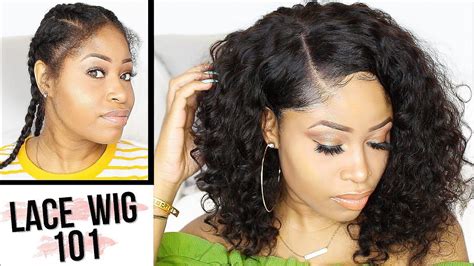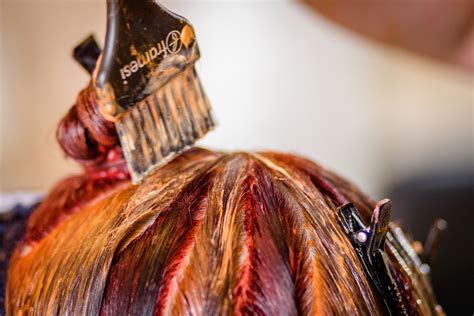Introduction

Hair coloring has become an integral part of the beauty industry, transforming locks into vibrant shades and enhancing personal style. With the advent of new technologies and color formulations, hair color application has reached new heights, offering endless possibilities for self-expression and style experimentation.
Current Trends in Hair Color Application
According to Statista, the global hair care market is projected to reach $93 billion by 2025. This growth is largely attributed to the rising popularity of hair color application, driven by factors such as:
- Increased awareness of hair health and the availability of gentle and nourishing formulas
- Emergence of innovative color techniques, such as balayage and ombré
- Growing demand for personalized hair color experiences and customized color solutions
The Art of Hair Color Application
Hair color application is a multifaceted process that involves multiple steps and considerations. These include:
1. Hair Color Consultation
A thorough consultation with a professional hair stylist is essential before any color application. This involves discussing the desired color outcome, assessing hair type and condition, and conducting an allergy test.
2. Color Selection
Choosing the right hair color is crucial. Factors to consider include skin tone, eye color, and hair texture. Stylists use color wheels and reference charts to determine the most flattering and harmonious shades.
3. Hair Preparation
Before applying color, hair must be properly prepared. This includes washing, drying, and detangling to remove any dirt or product buildup.
4. Color Application
Hair color is applied using various techniques, such as:
- Full Coverage: Covers all of the hair, from roots to tips
- Ombré: Gradually transitions from one color to another, creating a subtle and natural look
- Balayage: Hand-painted highlights that add dimension and texture
5. Color Processing
Color processing time varies depending on the formula and hair type. During this step, the color absorbs into the hair shaft and undergoes a chemical reaction.
6. Rinsing and Conditioning
Once the processing time is complete, the color is rinsed thoroughly. A deep conditioner is applied to restore moisture and protect the hair.
Benefits of Hair Color Application
Hair color application offers numerous benefits, including:
- Enhance appearance and boost confidence
- Cover gray or unwanted hair
- Create a unique and personalized style
- Express creativity and experiment with different looks
Statistics on Hair Color Application
- According to the American Hair Loss Association, over 40% of women color their hair.
- Research published in the Journal of Cosmetic Dermatology found that hair coloring increases perceived attractiveness and youthfulness.
- A report by the NPD Group revealed that the global hair color market is worth approximately $25 billion annually.
Innovative Ideas for Hair Color Application
To generate ideas for innovative hair color applications, consider using the word “Chromatic Collage.” This refers to blending multiple colors on the hair in a patchwork or mosaic-like design. Experiment with unconventional color combinations, gradients, and geometric patterns to create truly unique and artistic styles.
Tables
Table 1: Hair Color Application Techniques
| Technique | Description |
|---|---|
| Full Coverage | Covers all of the hair |
| Ombré | Gradual transition from one color to another |
| Balayage | Hand-painted highlights |
| Color Blocking | Using multiple solid colors in distinct sections |
Table 2: Hair Type and Color Compatibility
| Hair Type | Suitable Colors |
|---|---|
| Fine Hair | Light and warm colors |
| Medium Hair | Most colors |
| Coarse Hair | Dark and cool colors |
Table 3: Hair Color Trends for 2023
| Trend | Description |
|---|---|
| Money Piece | Face-framing highlights |
| Copper Blonde | Warm and vibrant shade |
| Chocolate Brown | Rich and luxurious color |
Table 4: Effective Strategies for Hair Color Maintenance
| Strategy | Benefits |
|---|---|
| Use color-safe shampoo and conditioner | Preserves color vibrancy |
| Avoid excessive heat styling | Prevents color fading |
| Get regular trims | Removes split ends and maintains healthy ends |
FAQs
1. How often should I get my hair colored?
The frequency depends on hair growth rate and color staying power. Generally, touch-ups are recommended every 4-8 weeks.
2. Can I color my hair at home?
While home hair color kits are convenient, professional colorists recommend seeking professional services to ensure proper application and optimal results.
3. Will hair coloring damage my hair?
Modern hair color formulas are designed to be gentle and nourishing. However, excessive coloring or improper application can cause damage.
4. How can I choose the right hair color?
Consult with a professional stylist who can assess your skin tone, eye color, and hair type to determine the most flattering and harmonious shades.
5. What are some tips for maintaining my hair color?
- Use color-safe products
- Limit heat styling
- Get regular trims
- Avoid over-washing
6. How much does hair color application cost?
The cost varies depending on the salon, technique used, and hair length. Generally, expect to pay between $100-$300 for a full color application.
Conclusion
Hair color application has evolved into a sophisticated art form, offering endless possibilities for personal expression and style experimentation. By embracing current trends, consulting with professionals, and adopting effective maintenance strategies, individuals can achieve their desired hair color goals and enhance their overall appearance and confidence.
